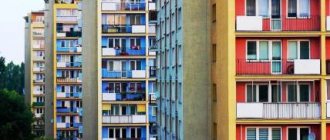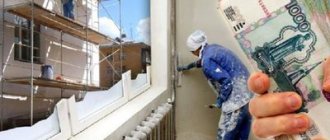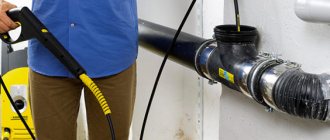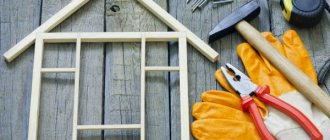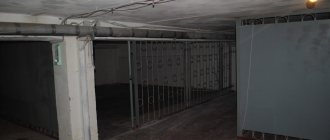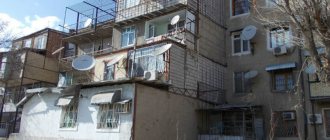Causes of roof leaks
The roofing system must be in perfect condition, only in this case can you be sure of its reliability. Regular roof inspections will help avoid trouble. Even the smallest flaws in your roof can cause big problems later on.
What can cause a roof leak? There are quite a few reasons:
- Poor selection of roofing materials.
- Mistakes by builders in the placement of roof layers.
- Errors in the construction of the sheathing, in the calculation of the pitch of the rafters.
- Lack of ventilation in the ridge part of the roof, improper functioning of vents, weather vanes in the eaves area.
- Technological violations in the arrangement of the roof.
- Improper creation of a water drainage system.
- Use of low-quality construction and fastening materials.
It should be noted that leaks can signal errors in the design and construction of not only the roof, but also the entire building. For example, a roof structure may become skewed if the builders and designers did not take into account the peculiarities of foundation movements.
Deformations in the building structure that occur due to errors in design or construction can cause roof leaks
Leak classification
Depending on the time of occurrence, all leaks can be divided into three types:
- "rainy";
- "snowy";
- insulating.
The first option is often detected during precipitation. During rains or some time after them, a wet spot forms on the ceiling or water actually drips. If the roof has a flat structure, then such a flaw is very easy to find. It is located directly below the leak. When the roof is pitched, it is much more difficult to localize the leak.
The interior of the room is completely damaged due to a roof leak
The second case of leakage is associated with the melting of snow and ice. It is during this period that accumulations of melted snow and ice formations can be seen in the interior of the room. Most often, drain funnels, valleys, gutters, etc. are affected.
Leakage can also result from a wet insulating layer of the roof. This occurs in hot summer weather. Excess condensation forms when there is a large temperature difference between the outside of the building and in front of the insulation. The vapor barrier membrane does not cope with the task of retaining excess moisture, this leads to leakage. Very often such troubles occur due to improper waterproofing.
Current or major repairs?
Very often, controversial situations arise regarding the classification of certain types of work on the repair of common property as current or major repairs. In most cases, a dispute arises between the owners of premises and apartments in a multi-apartment residential building (hereinafter MKD) and the operating organization, the latter may include: management companies (hereinafter MC), homeowners' associations (hereinafter HOA), housing (hereinafter LC) and housing- building cooperatives (hereinafter referred to as housing cooperatives), etc.
According to the current legislation, the burden of maintaining the common property of apartment buildings lies with the owners of apartment buildings; this requirement is established by Part 1 of Art. 39 of the Housing Code of the Russian Federation. And in accordance with clause 16, part II of the “Rules for the maintenance of common property in an apartment building”, approved by Decree of the Government of the Russian Federation of August 13, 2006 N 491, the proper condition of the common property, depending on the method of management of the apartment building, is ensured, including:
- owners of premises;
- management organization (in most cases in Moscow, the management of apartment buildings is carried out by Management Companies and regional state budgetary institutions Zhilishchnik);
- a homeowners' association, housing, housing-construction cooperative or other specialized consumer cooperative;
- the developer (if the premises have not been transferred from the moment the house is put into operation);
- and other variations.
At the same time, in accordance with clause 8, article 55.24 of the Town Planning Code of the Russian Federation, proper condition is understood as: “...maintaining the parameters of stability, reliability of buildings, structures, as well as the serviceability of building structures, engineering support systems, engineering support networks, their elements in accordance with the requirements of technical regulations and design documentation.” At the same time, maintenance and repairs must be carried out to maintain proper condition.
In accordance with Article 36 of the Housing Code of the Russian Federation, the common property of apartment buildings includes:
- roofs (roofing, covering, drainage system, etc.);
- load-bearing structures (foundation, floors, columns, walls, pylons, etc.);
- enclosing structures (external walls, covering, facade structures, etc.);
- engineering communications and technical equipment (elevator, sanitary, ventilation equipment, etc.) serving more than one room in a given house;
- premises that are not parts of apartments and do not belong to individual owners in the building (staircases, corridors, elevator halls, etc.), as well as premises intended to meet the social and living needs of the owners of premises in a given building.
Summarizing the above, we can conclude that, depending on the method of managing the apartment building, the operating organization is entrusted with the responsibility to maintain the common property in proper condition, for this purpose maintenance and routine repair work is carried out.
Now it is necessary to decide in which cases repair work will be classified as routine repairs, and in which cases as major repairs. To do this, it is necessary to understand the essence of these terms, and also to establish what scope of work is provided for each of the repairs.
Let's consider the term “current repairs” , this term is disclosed in clause 3.12 of SP 255.1325800.2016 “Buildings and structures. Operating rules. Basic provisions" :
Current repairs: a set of measures carried out in a planned manner during the estimated service life of a building (structure) in order to restore serviceability or performance, partially restore its resource, established by regulatory documents and technical documentation, ensuring their normal operation.
Also, the term “current repairs” is contained in clause II of MDK 2-03.2003 “Rules and standards for the technical operation of housing stock” :
Current repairs of a building include a set of construction, organizational and technical measures in order to eliminate malfunctions (restoring operability) of elements, equipment and engineering systems of the building to maintain operational performance.
An approximate list of work performed during routine repairs is contained in the following regulatory and technical documents:
- MDK 2-03.2003 “Rules and standards for the technical operation of the housing stock”, approved by Resolution of the State Construction Committee of Russia dated September 27, 2003 N 170, Appendix 7;
- VSN 58-88 (r) “Regulations on the organization and implementation of reconstruction, repair and maintenance of buildings, public utility and social-cultural facilities”, Appendix 7;
- MDK 2-04.2004 “Methodological manual for the maintenance and repair of housing stock”, Appendix 2.
Next, we will consider the definition of the term “overhaul” . In a general sense, the term “major repairs” is contained in Article 1, paragraph 14.2 of the Federal Law of December 29, 2004 N 190-FZ “Town Planning Code of the Russian Federation” :
capital repairs of capital construction projects (except for linear facilities) - replacement and (or) restoration of building structures of capital construction projects or elements of such structures, with the exception of load-bearing building structures, replacement and (or) restoration of engineering support systems and engineering networks provision of capital construction projects or their elements, as well as replacement of individual elements of load-bearing building structures with similar or other elements that improve the performance of such structures and (or) restoration of these elements
In relation to the repair of apartment buildings, the term “major repairs” is given in Article 2, paragraph 1 of the Federal Law of July 21, 2007 N 185-FZ “On the Fund for Assistance to the Reform of Housing and Communal Services”:
major repairs of an apartment building - carrying out and (or) provision of work and (or) services provided for by this Federal Law to eliminate faults of worn-out structural elements of the common property of the owners of premises in an apartment building (hereinafter referred to as the common property in an apartment building), including their restoration or replacement, in order to improve the performance characteristics of common property in an apartment building;
The recommended list of works for major repairs of apartment buildings is given in the following regulatory and technical documents:
- MDK 2-03.2003 “Rules and standards for the technical operation of the housing stock”, approved by Resolution of the State Construction Committee of Russia dated September 27, 2003 N 170, Appendix 8;
- VSN 58-88 (r) “Regulations on the organization and implementation of reconstruction, repair and maintenance of buildings, public utility and social-cultural facilities”, Appendix 9;
- Methodological recommendations for the formation of the scope of work for the overhaul of apartment buildings financed from funds provided by Federal Law of July 21, 2007 N 185-FZ “On the Fund for Assistance to the Reform of Housing and Communal Services”, table 2.3.
At the same time, in paragraph 1 of the Notes to Table 2.3, Methodological recommendations for the formation of the scope of work for the overhaul of apartment buildings, financed from funds provided for by the Federal Law of July 21, 2007 N 185-FZ “On the Fund for Assistance to the Reform of Housing and Communal Services " indicates:
When overhauling structures and engineering systems as part of the common property of an apartment building, as defined by Federal Law 185-FZ, at least 50% of each structure and engineering system is replaced.
Summing up, we can draw the following conclusions: during the current repair of common property, work is carried out to partially restore the resource of the building, repair individual elements of the building in order to maintain the structures, elements and equipment of an apartment building in proper condition. In this case, repair work should not exceed 10-20% of the total area or specific gravity of the element being repaired. In turn, a major overhaul is aimed at eliminating malfunctions of worn-out structural elements of MKD with restoration or complete replacement of the elements in question. At the same time, during major repairs of structures and engineering systems related to the general property of the apartment building, at least 50% of each structure is replaced.
Let's give an example: the roof of a multi-apartment residential building is leaking, and the management company refuses to repair it, citing the fact that the developer built the house with numerous defects, in particular, did poor quality work on the roof waterproofing, and in order to eliminate the leaks, a major repair of the entire roof is required. In this regard, the management company refuses to carry out routine repairs.
Solution to the problem: if the area of the roofing of an apartment building that needs to be repaired to eliminate the cause of the leak does not exceed 10-20% of the total area of the roofing, then the management company is obliged to carry out routine repairs of the roofing. And in order to convince the management company to carry out routine repairs, the owners of premises in an apartment building, on the basis of clause 13, part II of the Decree of the Government of the Russian Federation of August 13, 2006 N 491 “Rules for the maintenance of common property in an apartment building,” have the right to enter into an agreement with an expert institution and conduct a construction and technical examination of common property, this service is provided by our institution - INDEPENDENT EXPERT PARTNERSHIP LLC. And if the expert’s opinion does not convince the Management Company, then the court will be able to protect your violated rights and force you to repair the roof. And as part of legal proceedings, you can apply for the appointment of a judicial construction and technical examination and entrust our expert institution to carry out the forensic examination.
Types of roof repairs
There is regulatory and technical documentation regulating the inspection, determination of the type of leak and subsequent repair of the roof:
- Construction norms and rules SNiP II-26–76.
- GOST standards.
- Technical requirements.
Even the most cursory inspection of such a roof will reveal a large number of defects.
Any roof repair work is preceded by a thorough inspection of the roof, rafter structure, and thermal insulation layer. When problem areas are identified, they are highlighted with chalk or paint. It is worth inspecting the roof both from the outside and from the attic, carefully studying the condition of the roof and identifying damaged areas. It is advisable to carry out the inspection during the day, and determine the location of leaks during rain.
Emergency roof repair
This type of work is carried out in emergency situations. The purpose of the repair is to urgently eliminate the integrity of the roof covering. Severe leaks can cause irreparable damage to the underlying premises, thermal insulation structure and supporting structures.
A quick response to a roof leak will save building residents from serious repairs to the premises
The estimate for the maintenance of the building must contain expense items for this case.
Current roof repairs
Current repairs are carried out twice a year (spring and autumn) and are prescribed in the planned activities of service organizations.
A patch placed in the area of the leak will increase the lifespan of the roof.
The spring-autumn inspection of roofs should record the readiness of the roof for uninterrupted operation and determine the types of repair work if necessary.
Current repairs are carried out to ensure that the building serves for a long time and with high quality. When planning ongoing repairs, the following must be taken into account:
- climatic conditions of building operation;
- design features;
- mode of use of the building;
- technical condition of the roof.
The organization that operates the building pays for ongoing roof repair work.
Major roof repairs
Carrying out major repairs involves implementing a whole range of measures aimed at eliminating any roof faults. They remove worn-out structures and replace them with new, more modern ones in terms of efficiency and durability. All this is done if the roof and rafters can no longer be used safely. The wear of the load-bearing elements of the roof must be at least fifty percent.
If the roof is very worn, it is necessary to replace the entire roof covering.
Problems that are solved during major roof repairs:
- improving roof performance;
- extending the service life of the building;
- increasing energy efficiency;
- change in appearance.
The time boundaries for the start and end of repair work are determined in accordance with regulatory documents adopted by industry management bodies.
Estimated and contract prices are taken into account when determining the cost of major repairs.
At whose expense is the major repair done?
The current legislative framework classifies the roof as the common property of all residents of an apartment building. Accordingly, material costs are divided among everyone, taking into account the area of privatized housing. The decision to carry out a major overhaul is made at a general meeting; it must be supported by at least 51% of the total.
The decision to carry out repairs is made at a general meeting of residents
Then there are two ways to receive funds.
- Contact the management company. The monthly payment includes contributions for major repairs; these amounts must be accumulated in special accounts. It is almost impossible to achieve a positive decision in this way; management companies have long used financial resources for their own personal purposes. At best, tiny amounts will be allocated, the rest falls on the shoulders of the residents.
- Ask for help from the state in accordance with Federal Law No. 185. Funds must be allocated by local councils and a government fund. A prerequisite is that residents contribute at least 5% of the required amount.
The legislation specifies standards for major repairs of apartment buildings
No one can predict the result of the appeals; it all depends on the honesty and desire of officials. And how they differ from officials in developed countries is described at the beginning of the article.
Video - Major renovation of the roof of an apartment building
You learned how to make high-quality roof repairs for an apartment building. Residents are often forced to perform this work instead of housing office employees or management companies. Residents are forced to take on them due to the critical situation with leaks, which cause significant damage to the interior. What to do with your own house under asbestos-cement slate? Can this roofing material be repaired? How to proceed in this case is described in the article on the pages of our website.
New roof repair technologies
Modern innovative technologies make it possible to repair roofs using the latest techniques. Liquid roof spraying is an effective technique that has a number of significant advantages:
- Carrying out repairs without removing the old roofing.
- Maximum protection against the adverse effects of sunlight.
- High adhesion (similar to welding).
- Highest level of elasticity.
- Short hardening time for the material.
- Low flammability.
- Environmental Safety.
- Durability (warranty period - 20 years).
- Resistance to microorganisms and rodents.
- Immunity to corrosion and aggressive environments.
Modern technologies facilitate and speed up the process of roof installation and repair
There are three types of liquid spray most commonly used in roof repairs.
Table: types of liquid spraying
| Waterproofing basis | Features and Applications |
| Rigid foam (PPU, foam) | It is used on roofs of various designs (circle, semicircle, made of corrugated materials), taking into account the angle of inclination is optional. Well isolates any manifestations of moisture, protects the roofing from mechanical damage. |
| Two-component rubber | High adhesive ability, suitable for roofs with complex relief structures, does not leave seams. Low level of flammability. Does not have an unpleasant odor. |
| Polymer mastic of bituminous nature | An ideal monolithic coating for bases made of different materials and configurations. Does not require additional preparation (heating). Quite a cheap method. Rich color range of materials used. |
Application of liquid spraying is carried out in several layers, their number depends on the selected type of soft roof, as well as on the main tasks of construction and on the loads on the roof.
Video: spraying liquid rubber on the roof
Repair of different types of roofing
Roof renovation work may vary slightly depending on the type of material used to waterproof the roof.
Roll coating
One of the most common causes of roll roofing wear is moisture seeping under the roofing. Under the influence of high temperatures, water heats up and turns into a vapor state, which leads to the formation of swollen and cracked areas in the rolled roofing. A lot of such problem areas can form, and this causes extensive rupture of the rolled roofing.
The defect can be eliminated using patches. The effectiveness of their use largely depends on the quality of the work performed.
Roll roof repair process:
- Cleaning from debris and powder. This must be done especially carefully at the site of damage.
- Opening the area of damaged coating. In this case, it is necessary to lift all layers of the roof and remove the old mastic.
Opening and cleaning the damaged area must be carried out with special care - Inspection and detection of traces of leakage.
- Drying the insulating layer.
- Cementing detected holes, priming the repaired area.
- Applying a patch with the same number of layers that were in the worn coating.
The patch is installed on the damaged area, pre-treated with bitumen mastic - Treating the area with the patch with molten bitumen mastic.
The patch should be placed 10–15 cm under the edges of the old “carpet”. Similar actions are repeated when bubbles form on the rolled roofing. Having discovered a swelling, it is cut crosswise with a sharp knife. Then they act according to the scheme described above.
Mastic for roofing felt repair is prepared from hot molten bitumen with filling (small sawdust, chalk chips, flour, asbestos). From eight kilograms of bitumen and one and a half kilograms of filler, 10 kg of mastic is obtained. After the resulting mixture boils, used engine oil (a little) is poured into it.
Mastic is a flammable liquid, so you need to work with it in compliance with safety rules. Special clothing and shoes, a reliable and durable container for heating the mixture, a ladle for pouring - always with a long handle, safety glasses - all this is mandatory when working with mastic.
Video: how to fix a hole in the roof
Metal coating
A metal roof can be given a “second life” by patching, removing cracks, painting, and replacing damaged areas.
Patches are placed on straight planes or in areas of ridges. The metal sheet for patches is taken with allowances of several centimeters to cover the worn area of the roof. The patch is connected to the old coating by welding.
Small holes (30-200 mm) can be closed using not metal, but pieces of dense fabric - tarpaulin, burlap, pre-treated with oil paint (leaved in paint for 5-7 days). “Gluing” occurs using paint.
If the flaws in the roof are less than 30 mm, then they are simply covered with molten bitumen mixture or red lead. After installation, all patches are painted with compounds that are resistant to precipitation.
Caulking problem areas improves the condition of a metal roof
If the metal roof is worn out by more than 50%, you will have to replace the old sheets of metal with new ones.
Video: metal roof repair
Slate
The most common damage to slate material is cracks.
A roof with large cracks requires urgent repair of the defect.
You can deal with these defects yourself by covering them with bitumen resin, a mixture of drying oil and chalk, and sealant.
To eliminate large area defects, patches made of asbestos cement sheets are used. The hole in the slate is treated with a sealant mixture and covered with a patch cut with small allowances. Some repairmen use a special self-adhesive tape with high waterproofing properties.
Sealing tape effectively eliminates minor defects
Major repair work is carried out in case of significant damage to the slate roof, replacing sheets with holes with new slate.
Often, a slate roof covering becomes overgrown with moss. To avoid such a nuisance, treat the damaged areas with a grinder or a metal brush, removing the moss. Then paint with a primer mixture of the desired color in one or two layers.
If moss is found on the roof, remove it as quickly as possible and treat the damaged area with a primer mixture
Video: repairing old slate
Corrugated sheet
Repair of a corrugated roof is carried out depending on the size of the hole. Small, barely noticeable damage can be eliminated using ordinary self-tapping screws in the color of the roof. The only condition is that they must have rubber gaskets.
Large holes will take more work to fix. For this you can use:
- Sealants (silicone, polyurethane, thiokol, acrylic).
- Bitumen mastics.
- Sealing tapes.
- Special purpose putties.
Each of these materials has its own pros and cons; the choice depends on the defect, the purpose of the building and material capabilities.
Silicone sealant is considered universal; it does not require mixing, since it contains only one component. This material is highly adhesive, elastic, and resistant to temperature changes. The latter characteristic is especially relevant for corrugated roofing, which reacts sharply to temperature changes.
Polyurethane sealant is very easy to use (it is very easy to foam a hole), but it is “afraid” of ultraviolet rays and quickly deteriorates in the sun, so it should be used in places where there is no direct exposure to sunlight.
Thiokol sealants are applicable only for the repair of individual roof elements, most often for seams and adjacent parts. This is due to their vulnerability to climate change.
Acrylic sealant is an environmentally friendly material; it can be used to eliminate any roof defects, especially from the inside.
A new product on the Russian market in the field of roof repair - waterproofing tape - is also suitable for roofs made of corrugated sheets. This material is made of a 1.5 mm thick bitumen layer, covered on the outside with a reinforced aluminum film. During repairs, the internal protective film is removed and the tape is glued to the desired location.
Modern material makes it possible to quickly and efficiently eliminate small roofing defects
The polymer-bitumen base allows the use of putty for high-quality repairs of corrugated roofing. Sealing surfaces and finishing are tasks that such waterproofing easily copes with.
In case of major damage to the roof, entire sheets of corrugated sheeting will have to be replaced.
Video: eliminating roof leaks from corrugated sheets
Ruberoid
Roofing felt coatings should be regularly coated with heated bitumen mastic. Peeling of roofing material can be patched up in this simple way: apply mastic to the roof surface using a brush with a long handle, moving from the ridge part down. Sprinkle sand on top to improve adhesion and protect the bitumen roof from the destructive effects of ultraviolet radiation.
A patch is applied to the areas of swelling or cracks in the roofing material, after first cleaning and cutting the repair area. For gluing, mastic mass is used.
To ensure a long service life of the roof, it is necessary to coat the seams very carefully
Video: roofing felt roof repair
State program for capital repairs of apartment buildings
Since the roof is a complex structure, it has many different parts and its repair requires the involvement of highly qualified specialists. Hence the cost of such work will be very high. Residents of apartment buildings often have a question: who should pay for major repairs?
If you analyze numerous sources and various legal acts, you can find a way to make repairs at minimal cost to the residents themselves. But in any case, much will depend on them. After all, they are the owners of the entire house, which means that concern for the condition of all structures and elements lies on their shoulders.
According to our legislation, a special program operates in many cities and towns in our country. It provides for the participation of the Housing and Communal Services Fund in financing the capital repairs of apartment buildings. Today, such an opportunity exists in all cities and in most other municipalities.
If a house requires serious and expensive work to improve its performance, then substantial funds can be allocated from this Fund. According to current laws, financial assistance can be provided in the amount of up to 95% of the cost of all work and materials required for major repairs of both the building itself and its structures and elements.
Important ! To participate in this program, homeowners must make a general decision that the house itself or part of it (for example, the roof) needs major repairs.
Then an estimate is drawn up for such work. All residents of the house must be familiar with it and agree to participate in this program. However, consent is required only from 2/3 of all homeowners, in which case the decision is considered accepted.
You also need to follow one more rule. Your work that you are going to do must be on the list of the Program. It includes a major overhaul of the roofs and partial replacement of some of its elements. In addition, the list includes the following works :
- processing of all wooden elements of the structure. Such work includes impregnation of rafters and other parts with fire-fighting and antiseptic agents.
- complete or partial replacement of roofing.
- repairs aimed at improving the temperature and humidity conditions in the attic.
- repair or replacement of all types of drains (both external and internal).
If the general wear and tear of the house is above 70%, then such buildings are not subject to major repairs. Another federal program applies to them. Such houses are considered unsafe and are subject to demolition or reconstruction.
Financial assistance from the Housing and Communal Services Fund will cover only 95% of all costs. The remaining amount must be collected by homeowners. Five percent of all expenses is not a very large amount. As a rule, it is assembled quite easily.
In our country, various documents and papers have always been important. Likewise, when carrying out major roof repairs, you need to collect a certain package, without it you will not be able to participate in the Program.
So, you need to submit the following documents to the relevant authorities::
- the application itself for subsidies from the Housing and Communal Services Fund.
- constituent documents of the legal entity that manages the apartment building.
- certificate of state registration of this legal entity.
- bank account statement.
- the choice of the management company should take place at a general meeting of residents. To allocate subsidies, minutes of this meeting must be provided. It should also contain a list of services and work on repairs and maintenance of the house.
- a copy of the house management agreement.
- the estimate itself for the upcoming major roof repair.
- the decision on the need for repairs must also be agreed upon at a general meeting of residents. The package of required documents includes the minutes of such a meeting. It must indicate that residents are familiar with the estimate, list of works and their cost. The consent of the homeowners to contribute funds for the work must also be indicated and the acceptance commission must be indicated. It is worth remembering that such a decision is considered legal if it is approved by two-thirds of all homeowners in a given apartment building.
- register of homeowners.
- an agreement with the organization that will carry out the repairs.
Mostly copies are provided to the relevant authorities. They all must be certified by the management of the management company.
The relevant body is the housing and communal services committee of the city or settlement. After submitting the entire package of documents, this organization has 10 days to make a decision on allocating or refusing to allocate a subsidy.
All actions related to these subsidies are regulated by the Federal Law of the Russian Federation dated July 21, 2007. N 185-FZ “On the Fund for Assistance to Housing and Public Utilities Reform” as well as Federal Law No. 323-FZ dated December 30, 2008. To receive the necessary subsidies, your home must meet all the requirements of Article 14 of this Federal Law. And one of the main requirements is that all homeowners have no debt. If this requirement is not met, then the housing and communal services committee may refuse you.
Repair of various types of roofs
The specifics of eliminating roof defects also depend on other roof parameters: configuration, color saturation, etc. Flat structures do not cause any particular difficulties during repairs.
Repair of pitched roofs
When repairing a pitched roof (single, gable, hip, attic), you should take into account the fact that moisture leaves this structure well by gravity. Therefore, you should not make too large allowances on the patches. You can save some material on overlaps.
With a roof slope of ten degrees or more, all materials are secured using special equipment. For roofs laid at an angle of less than 10°, you can use the ballast method (sprinkling with any suitable material). If strong winds often blow in the area where the building is located, then it is best to repair the roof using glue.
Seams on a pitched roof are welded or repaired using chemical compounds. If large areas of a pitched roof are being repaired, it is advisable to carry out work from the ridge to the eaves.
Translucent roof repair
The roof, which is made of translucent material, is one of the most difficult architectural structures (especially in terms of repairs).
Translucent roof covering has a number of advantages, but is very problematic to repair
The difficulty of operating a translucent roof is especially evident in winter, when snow accumulates on the roof and areas of icing may occur. The usual mechanical way of dealing with these difficulties is not suitable. The slightest scratches can affect the appearance of the structure and its performance characteristics.
Plastic is usually installed by professionals, so it is also better to entrust the repair of such a roof to experts in their field. Most often, the repair of a translucent roof consists of a complete replacement of a double-glazed window or panel.
Elimination of leaks in built-up roofs
Roofs installed using fused technology are repaired using patches. Polymer-bitumen membranes are also used to create melting seams.
In case of extensive damage to the roof during repairs, special work is also carried out to replace the screed.
Works and materials for repairing soft roofs
When arranging a roof, especially a flat one, soft roofing materials are often used: rolls, bitumen tiles, soft tiles, membrane. Despite the great variety, they have the same basis. The production uses bitumen and fiberglass, as well as a range of stabilizers and other components that help improve the quality and performance of the roof.
These materials are very popular due to their low cost and ease of installation. In addition, they are durable, moisture-proof and fire-resistant. Their flexibility makes it possible to install not only on a flat surface, but also with complex geometries. This makes repairs much easier.
Major roof repairs are carried out depending on its type, using several methods: heat welding, gluing, mechanical connection and fusing.
A soft roof often needs major repairs because it is more susceptible to destruction. Overhaul is work to completely replace old material that has lost its quality with a new one that has better performance characteristics. One of the most common types of soft roofing is membrane. This material is very elastic, resistant to weathering and temperature changes. When making major repairs using membranes, there is no need to install additional waterproofing. The membranes themselves have good waterproofing properties.
Polymer roofing is suitable for flat roofs and roofs with any slope. Its main advantage is its width, which makes it possible to cover a surface of any complexity with a minimum of seams, which significantly reduces the likelihood of leaks. Several methods are used to attach it. The ballast method is used on roofs with a slight slope. The membranes are secured at the edges and covered with ballast, such as gravel, on top. When used on roofs with a large slope, they are secured using special fasteners. If the roof has a very complex geometry, then the best fastening option would be to use glue. To ensure strong seams, hot air welding is used. The use of membranes in the overhaul of soft roofs makes it possible to carry out work as quickly as possible and at any time of the year.
Roof repair tools
To perform roofing work, you need to prepare a whole set of tools and materials:
- Gas-burner.
- A special stick for rolling out rolls.
- A broom or broom to clean worn areas of the roof.
- A spatula or trowel for smoothing out overlaps and applying putty.
- A sharp knife for cutting roofing material.
- Tin scissors for cutting out patches.
- Ax for clearing several layers of roofing structure.
- Container for melting mastic.
- A brush with a long handle for applying liquid compounds.
Gas-burner
Using a gas burner, you can melt the mastic and also dry the roofing material used to the desired temperature.
Modern gas burners are equipped with special functions for adjusting operating modes. This allows you to save gas consumption during forced downtime or in the intervals between laying layers of roofing.
A gas burner helps speed up the roof repair process
For the manufacture of gas burners, materials resistant to high temperatures are used. The long handle is another significant advantage of modern burners.
The restriction on the use of a gas burner is a temperature below minus 15 degrees. In more severe frost conditions, it is necessary to use burners with liquid fuel.
Compliance with safety rules when using a gas burner is a prerequisite for high-quality and efficient work:
- Use special clothing and special shoes.
- Check the equipment for serviceability of all components (tightness of cylinders, integrity of hoses).
- Do not light the burner while standing directly opposite it (only from the side!).
- Monitor possible overheating of deposited materials.
